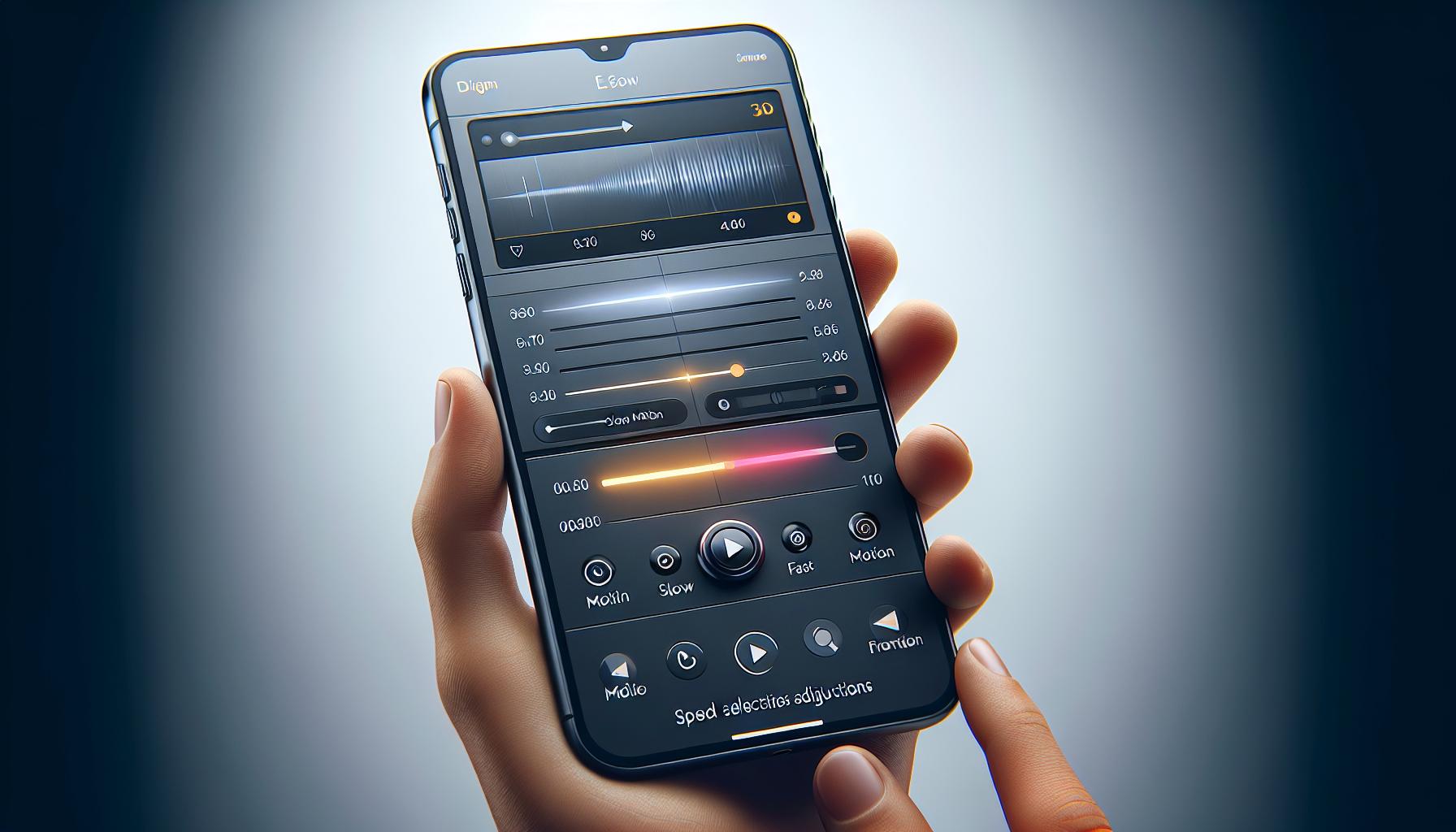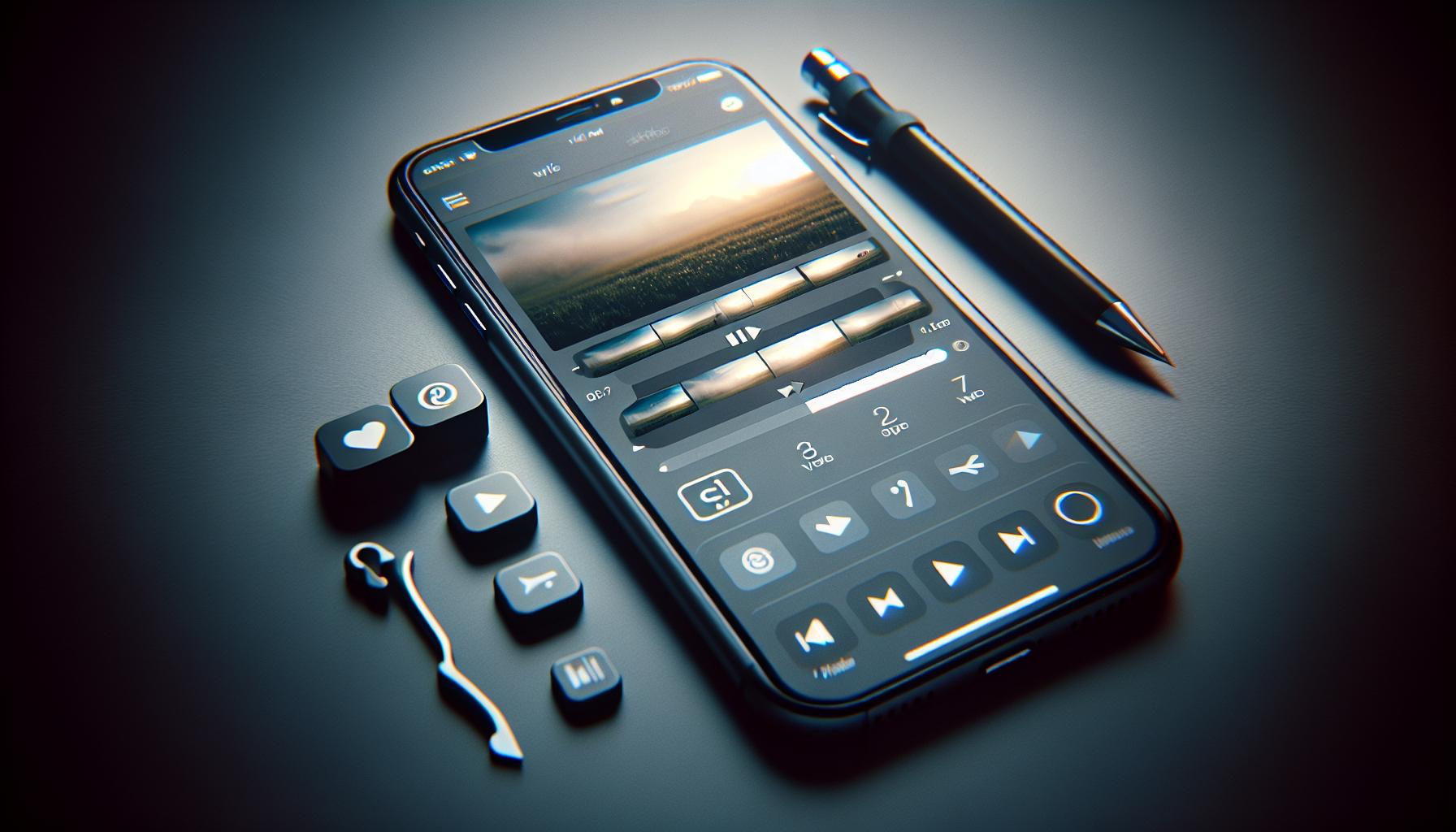Ever found yourself wishing you could speed up videos on your iPhone? Whether it's for a fun time-lapse effect or simply to breeze through those lengthy lectures, knowing how to manipulate video speed can be a game-changer.
In this guide, we'll walk you through the steps to get your videos playing at whatever speed you like. You'll discover it's not as complicated as you might think. With the right tools and a few taps, you can become a master of video speed on your iPhone.
Why Speed Up Videos on iPhone?
You might be wondering, "why speed up videos on my iPhone?" To start with, manipulating video speeds isn't just for the tech-savvy. It's within anyone's reach if you've got an iPhone. Now, let's delve into why you'd want to take control over your video playback speed.
One of your biggest motivations might be time efficiency. In this fast-paced world, time is nothing less than gold. Speeding up videos allows you to consume content, such as informative lectures, quicker than before. Let's put it this way: you've got a lecture recording that's an hour long but only half an hour to spare. By doubling the video speed, you'll get through the lecture in half the time.
Besides being a great time saver, manipulating video speed on an iPhone comes handy while creating unique video content. Ever been mesmerized by those time-lapse videos of a bustling city or a lovely sunset? Well, guess what? You can create something similar with your iPhone! The ability to speed up videos lets you create entertaining time-lapse sequences or fast-motion effects, adding a touch of creativity to your video projects.
Here's an interesting point to consider. Research shows that upping the playback speed of up to 2.0 doesn't significantly impact comprehension. So, even as you zip through that lecture recording at twice the speed, you'll grasp the content just as effectively.
Even if you're not sure why you'd need to speed up videos, exploring these possibilities will sharpen your digital skills. After all, you never know when you might need to become a video speed maestro!
Due to the substantial benefits and utilities, manipulating video speed has become a popular trend among iPhone users worldwide. In the subsequent sections, we'll help you navigate this process step by step.
Understanding Video Speed Options

Before diving into how to manipulate the speed of your video, it's crucial to have a clear understanding of the video speed options available. Numerous apps let you control the speed of a video. Some apps focus on singular options like slow motion or fast motion, while others encompass a range of speed manipulations.
Slow motion or slowmo is an effect in film-making whereby time appears to be slowed down. Utilized correctly, it can create a dramatic effect that gives importance to something that might otherwise go unnoticed. A casual video of a bird taking flight, for instance, turns into a beautiful, slow-motion spectacle where every wing movement can be fully appreciated.
Fast motion, on the other hand, is precisely what it sounds like — a video that plays at a speed faster than the original recording. It's often used for creating time-lapse sequences. Let's say you're filming an entire day's activities. Playing back that video in real-time could be, frankly, quite monotonous. By increasing the video's speed, you create a fun, speedy overview of events.
Then there's frame rate, a term you might be familiar with if you've spent any time in the video gaming world. Increasing or decreasing a video's frame rate can drastically change its appearance and the amount of detail perceived in each second of video.
Lastly, you could opt for adjusting the speed at specific intervals within a video. This could mean slowing it down for a dramatic moment and then ramping up the pace!
All these options can radically transform your iPhone video content, giving you numerous opportunities to be creative and craft compelling narratives. Your own imagination is all that limits the way you use these features. With practice and experimentation, you'll learn to choose the optimal settings for each situation.
Remember: video speed isn't just about speed. It's about tone, dramatic effect, and storytelling. By understanding these options, you're taking your first step into the world of advanced video editing on iPhone.
Stay tuned to learn how to apply each of these techniques in detail. You're well on your way to mastering the art of video speed manipulation on your iPhone.
Built-in Video Speed Controls on iPhone
Your iPhone comes equipped with a variety of built-in functions that let you manipulate how quickly your videos play. Having a clear understanding of these tools is essential to mastering advanced video editing on your device.
First on the list is your iPhone's ability to create time-lapse videos. This is an exciting feature that lets you capture extended periods of time and then speed up the playback to create a condensed version. Ready to see the sunset in just a few seconds? Or a traffic-filled city morph into a flurry of lights in a blink? The time-lapse feature makes this possible.
You're not just limited to time-lapse videos. There's also the slow-motion capability. This function allows you to slow down the speed of your video-making those dramatic moments even more impactful. You'll find this feature invaluable when engaging in action sports videography or capturing the subtler moments of life that we often miss.
But what if you want to change the speed of an already recorded video? That's where the Photos app comes into play. The Photos app on your iPhone allows you to edit the speed of your video after it's been recorded. You can make specific sections of your video play in slow motion or fast motion adding to the dynamic appeal of your final cut.
And let's not forget about frame rate controls. These allow you to change the number of images displayed per second for your video further enriching your output. Lower frame rates can generate an evocative slow-motion effect while higher frame rates can make your video play faster than real-time. Since iPhones can record videos up to 60 frames per second your ability to experiment with different frame rate speeds is expansive.
Adopting these techniques can turn your casual videography into a cinematic experience. Up next, we'll delve into detailed instructions on how to use each specific tool for video speed control on your iPhone.
Using Third-Party Apps to Speed Up Videos
On your path to becoming an iPhone video editing pro, you'll soon find out that there's a slew of third-party apps ready to help you out. These apps often have more comprehensive features that allow you to manipulate your videos with a higher degree of control than what's available on the standard iPhone editing interface.
One highly recommended app is iMovie. Free to all Apple users, iMovie offers a user-friendly interface that can speed up your clips with a few simple steps. It's ideal if this is your first stab at video editing or if you're just looking for an intuitive, no-frills solution.
If you're looking for more advanced capabilities, then Videoleap is worth trying out. Despite it's pro features, Videoleap manages to remain user-friendly with an intuitive layout. It allows you to control the video speed on a frame by frame basis, offering a precise editing experience not often found in free apps.
Another standout is LumaFusion, hailed by many as the most professional video editing app on iOS. It's a paid app, but it offers features comparable to desktop video editing software. With LumaFusion, you can alter your video speed anywhere between 0.125x to 24x, giving you an unprecedented level of control.
Finally, for Instagram lovers out there, you have InShot. This app specializes in optimizing videos for social media sharing, offering nifty advantages like built-in music and sticker libraries. It's got a handy speed control feature, too, for both your video and audio tracks.
Here's a quick table summarizing these third-party apps:
| App | Price | Remarks |
|---|---|---|
| iMovie | Free | Great for beginners, user-friendly |
| Videoleap | Free with optional in-app purchases | Professional features, frame by frame speed control |
| LumaFusion | Paid | Desktop-like features, precise speed control |
| InShot | Free with optional in-app purchases | Ideal for social media, built-in music and sticker libraries |
Hold on a moment - the journey isn't over yet. Next, let's take a look at the actual steps involved in using these apps to speed up your videos.
Best Practices for Speeding Up Videos

Speeding up videos on your iPhone isn't just about having the right tools. It's also about knowing the best practices in video editing. Here are a few things to keep in mind as you shorten the duration of your clips using third-party apps.
Trim Unnecessary Parts
Before you rush into increasing the speed, consider refining your footage first. Trim all the unnecessary parts of your video that don't add any value to your final product. This way, you'll be increasing the speed of meaningful sections only.
Balance Speed and Quality
Remember, your job is to achieve a perfect harmony between speed and quality. When you're increasing the speed of a video, make sure it doesn't compromise on video quality. You want your content to still be enjoyable to watch.
Adjust Audio as Necessary
What happens to audio when you increase the speed of a video? Yes, it's going to be faster as well and sometimes it's undesirable. Some tools like LumaFusion and InShot provide options to adjust the audio separately. Use these features to maintain the integrity of your sound.
Preview Before Saving
Lastly, never skip the preview. Always check the final product before you hit save. This way, you'll avoid unpleasant surprises later on.
Conclusion
You've now got the know-how to speed up videos on your iPhone like a pro. Remember, it's not just about making the video faster, but doing it right. Trim the excess, balance speed with quality, and don't forget about the audio. Always preview your work before you hit save. With these tips, you're ready to create videos that are engaging and time-efficient. So, grab your iPhone and start experimenting. You'll be amazed at what you can achieve.
Frequently Asked Questions
How can I speed up videos on my iPhone?
You can speed up videos on your iPhone using third-party apps. These apps offer a variety of tools for editing video pace, from slight accelerations to fast-forward effects.
What should I consider when speeding up my videos?
Consider trimming unnecessary parts of the video first, to save on processing power. Balance speed and video quality, adjusting both as necessary, to avoid creating a video that's too fast or lacks visual clarity.
Does adjusting video speed affect audio quality?
Yes, speed adjustments can affect audio quality. If the audio becomes distorted or unclear, you might want to consider adjusting it separately within the app.
Should I preview my video before saving?
Absolutely. Always preview your edits before saving. This will allow you to spot and correct any issues or inconsistencies earlier rather than later, and ensure the final product meets your standards.




